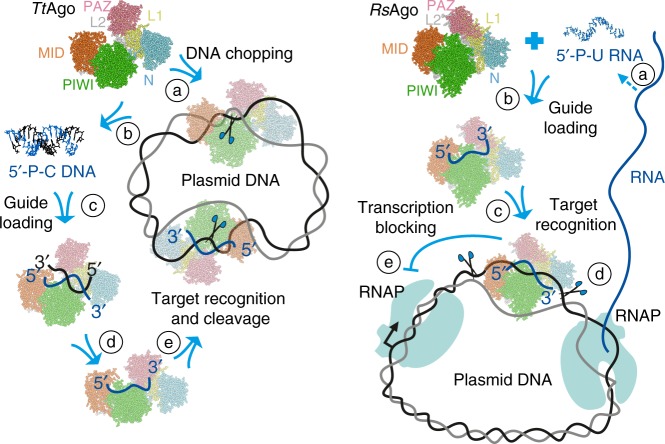Fig. 5.
Proposed mechanisms of DNA interference by DNA-guided (TtAgo, left) and RNA-guided (RsAgo, right) pAgos. TtAgo was proposed firstly to process invader DNA in a guide-independent manner (“DNA chopping”, a), resulting in slow DNA fragmentation (b) and binding of short DNA duplexes (c), followed by dissociation of the passenger strand (d). Guide-loaded TtAgo can then attack the target DNA with high efficiency (e)31,33. RsAgo was proposed to bind short RNAs processed from mRNAs by Ago-associated or cellular nucleases (a, b), followed by target DNA recognition (c), which can result in DNA degradation by accessory nucleases (d) and/or inhibition of transcription (e)34

